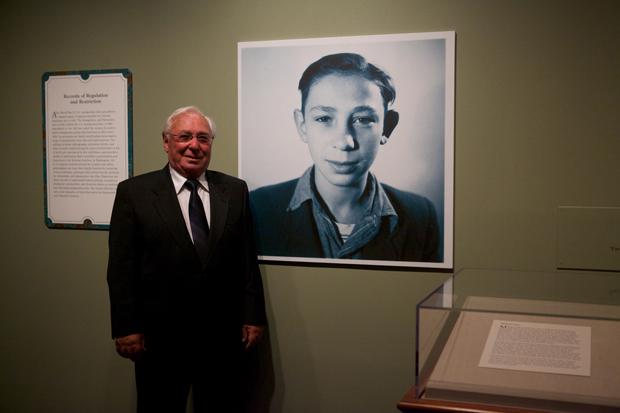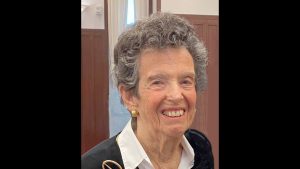For a National Archives exhibit, Michael Pupa finally reveals his harrowing Holocaust journey
Published June 21, 2012
WASHINGTON — While preparing for a new National Archives exhibit that he is curating, Bruce Bustard showed some documents to his colleague, Miriam Kleiman. She was stunned to see the name Michael Pupa, father of her friend Jill Pupa, as he had never spoken to his family about his harrowing past.
“I got a phone call from Miriam before Rosh Hashanah,” Jill Pupa said. “That was really when my father started talking about his story, and it’s incredible that it’s out.”
Michael Pupa’s story of survival and emigration was featured in a June 14 preview of a new National Archives exhibit about 20th-century immigrants to America. The exhibit, which runs through Sept. 4, features 31 immigrants from diverse backgrounds.
The name for the exhibit, “Attachments: Faces and Stories from America’s Gates,” comes from the photos and documents attached to the government forms needed to enter the United States.
At the event, Pupa spoke to the audience about his gratitude for how America changed his life. A few steps away from him – and not far from national treasures — was a picture of him at the time of his entry into the U.S. and his naturalization forms.
“Everyone expects to see such items and the Declaration of Independence, the Constitution and the Bill of Rights at the National Archives. I certainly had no idea that these personal documents of me … would be out in the National Archives,” Pupa said at the event.
Pupa, who grew up in the Polish town of Manyevitch, escaped from the Nazis into the Polish forests in 1942. After spending years in displaced persons camps in Germany, he came to the U.S. in 1951 as a 12-year-old orphan to live with a foster family in the Cleveland area.
When he came to the country, he left his past behind. Pupa went on to earn a degree from John Carroll University in Ohio and own a business. He married and raised two children. But Pupa did not speak about his past, even to his family.
As the only living immigrant being highlighted in the “Attachments” exhibit, Pupa has finally started to tell his story.
As a young boy, he hid for two years from the Nazis with his father and uncle in the Polish forests outside Manyevitch. His mother and young sister were killed by the Nazis, who later captured and killed his father.
Following World War II, he was smuggled back into Germany to live in four DP camps. Pupa, his uncle Lieb Kaplan and cousin Bronja lived in the camps for six years. Kaplan put Michael and Bronja in the custody of the United Nations International Refugee Organization, pushing for their immigration to the U.S. without him. After a complicated journey via the help of various agencies, Michael wound up in the United States.
After settling in Cleveland in late 1951, Pupa was placed in several foster homes; he never discussed his wartime experiences.
“It’s still difficult to talk about it. The people that went through the trauma, it’s very difficult to talk about it,” Pupa, who still lives in the Cleveland area, told JTA.
The exhibit was created, according to U.S. archivist David Ferriero, because of Bustard’s interest in a collection of documents and photos that were attached to immigrants’ forms as they entered the U.S.
“As [Bustard] was going through the records, he discovered all of these immigration files that had photographs attached to the records,” Ferriero said. “He became very interested in that aspect of documentation, and as he started reading more on the case files, it became clear that there was a story to tell.
Bustard noted during his remarks that Pupa’s story was “one of the most moving stories in the exhibit.
He told JTA that “We try very hard to have a diversity of stories in our exhibits. For the most part, we managed to pull that off in the ‘Attachments’ exhibit. Also, the immigration of Eastern European Jews in the early 20th century and the American response to the Holocaust are both very important topics in American history.”
Jill Pupa said, “The exhibit as a whole really is about the U.S., and we are all children of immigrants, and that’s what makes our country great. It shows the bigger picture … and this is the fabric of the U.S.”
As to the profound impact of the exhibit on the Pupa family, Bustard said he was deeply touched.
“I never dreamed in my career that something I would put on display would have that effect on somebody,” he said.
(This article was written in cooperation with the Washington Jewish Week.)














